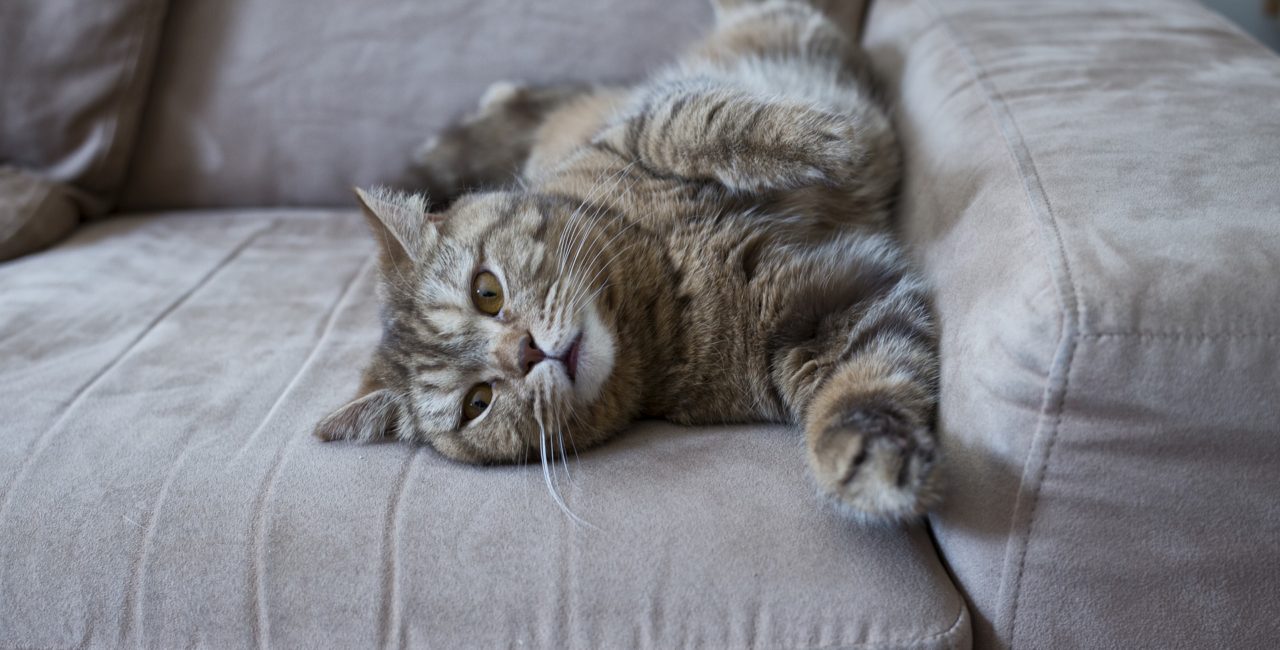Owners of indoor cats often need a way to control the scratching on inappropriate objects. There are several ways we can do this and I will briefly discuss the pros and cons of each. Kittens often start scratching at 8 weeks of age as a way to shed their claw husks, mark territory and stretch their muscles. Our goal is to try to choose the most humane option first and keep surgical options as a last resort.
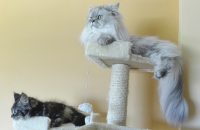 Training
Training
Cats can be taught where an appropriate scratching spot is. By using sisal covered scratching posts, cardboard blocks and regular nail trims there is little, if any, damage to furniture. Encourage cats to scratch where wanted by placing toys and catnip in appropriate places. You can apply ‘sticky paws’ strips to furniture or areas that are undesirable until your cat learns.
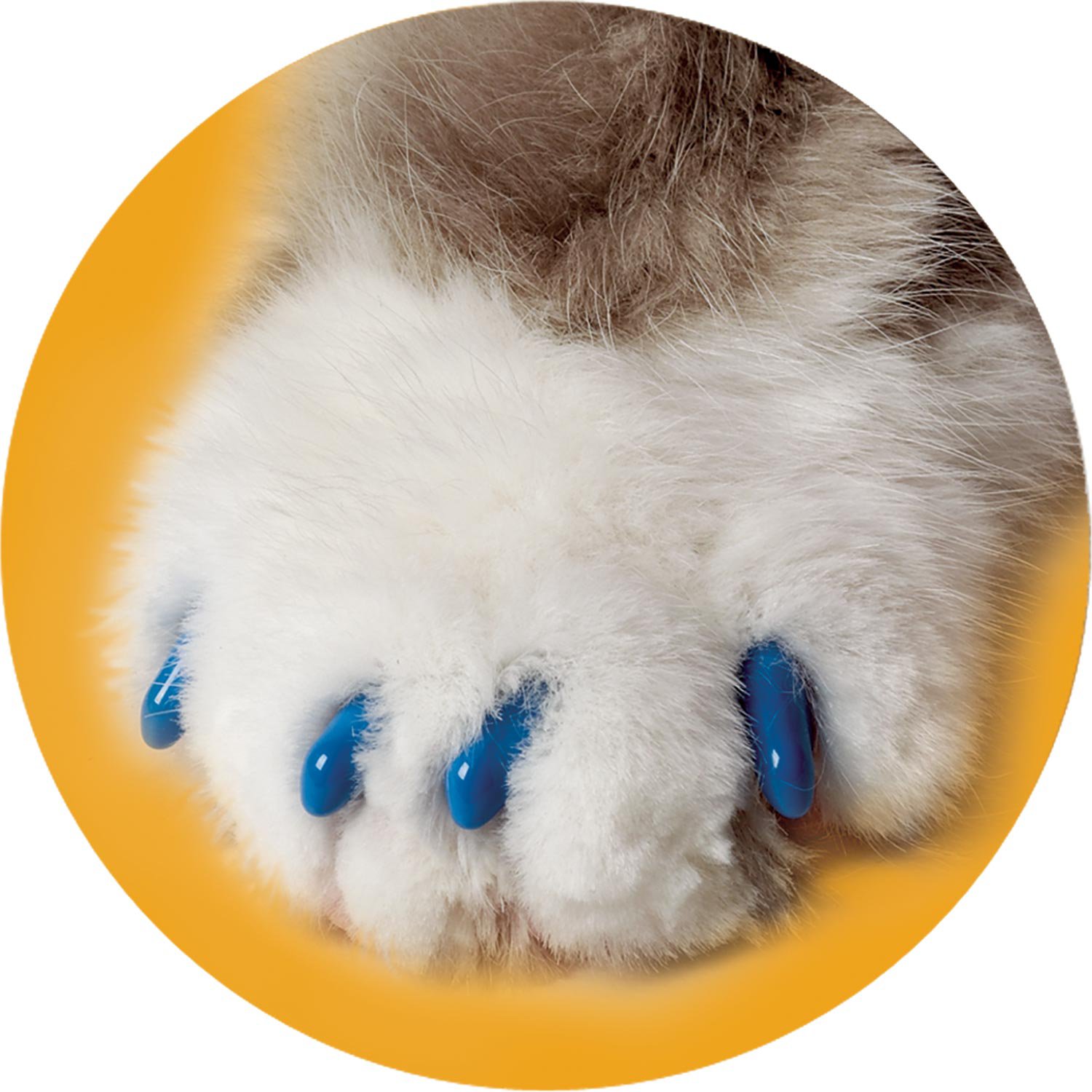 Soft paws
Soft paws
These are a vinyl cap, available in many colours/sizes, that are glued onto the nails. They generally last 4-6 weeks.
Tendonectomy
This is a surgical procedure in which the tendon that allows the cat to extend and retract their nails is severed and a portion removed (to prevent reattachment). There are several small incisions on the underside of the toes that are closed using tissue glue.
Pro’s
- less invasive than a declaw, less bleeding during and after surgery, less post-operative pain
- cats can go home the same day
Con’s
- owner’s must use yesterday’s news litter for the first week after the surgery to prevent infection and irritation of the surgical site.
- owner must continue to clip cat’s toenails to prevent them from growing into the footpad causing pain and infection.
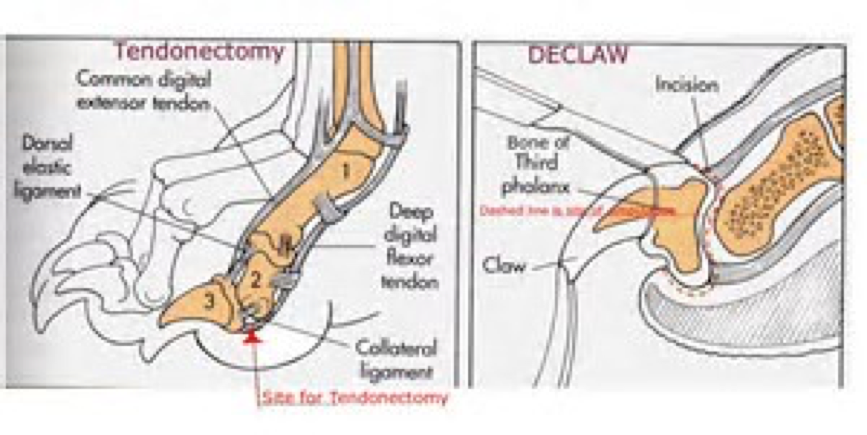
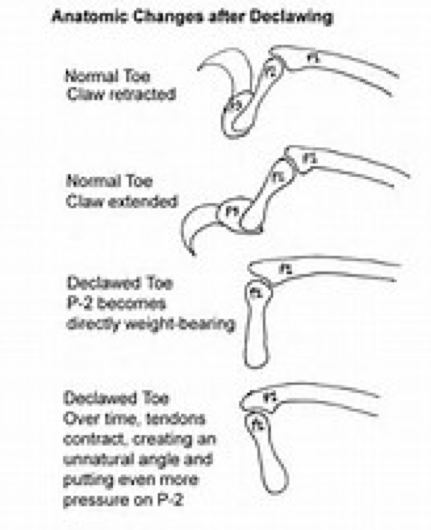 Declaw
Declaw
This is the surgical removal of the third phalanx (the bone that the nail bed attaches to). A nerve block (freezing of the nerve) needs to be done prior to the procedure since the nerve is severed during the procedure. There are two additional ways that a declaw can be done; surgical dissection using a scalpel blade and guillotine method.
Pro’s
- permanent
Con’s
- requires 2 nights of hospital stay for bandages and pain meds
- owner’s must use yesterday’s news litter for the first week after the surgery to prevent infection and irritation of the surgical site.
- cats without claws seem to bite more often as a defence mechanism
- Recurring pain or chronic pain can occur (“phantom limb pain”) due to neuroma formation
- Cats normally walk with their toes bearing their body weight with each step being cushioned by the foot pad. Once the third phalanx is removed the tendon will pull the remaining piece of bone fragment under the foot causing a painful “pebble-in-the-shoe” sensation. To avoid this over time, they learn to walk with their weight shifted farther back on their paws which has been shown to cause arthritis.
It is always best to consult with your veterinarian before performing any surgical procedures. Please contact the clinic if you have any questions.
Dr. Ashley Kirkham


